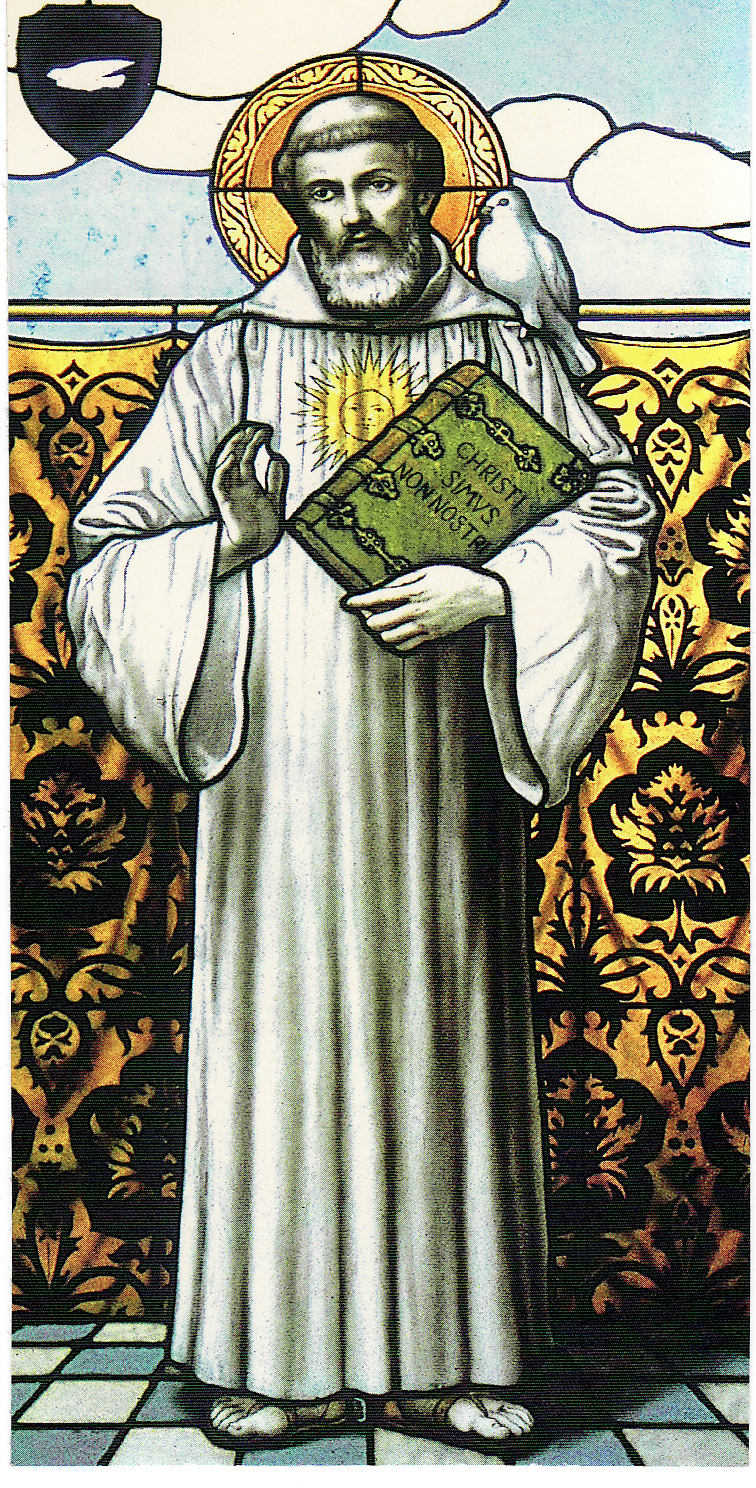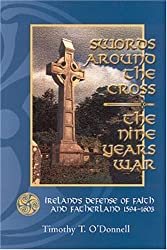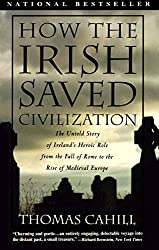
Today we celebrate the feast of the Irish Saint, Columban, also known as Columbanus.
Famous for his passion and zeal, which spread across much of Europe, he rekindled the monastic life wherever he went. He was particularly influential in France and Italy, where he founded his famous monasteries.
St. Columban began life in Meath, Leinster around the year of 543AD. And tradition has it that when pregnant, his mother dreamt that she saw a dazzling sun, pouring its rays forth from within her filling the world with its light. She was thus convinced that her child would in some way become an important, influential figure.
As we shall see, her dream was prophetic – St. Columban would indeed cast rays of light upon the world. And the images we find of the saint depict him with both the dove (Columban, meaning white dove, in Latin) and this dazzling bright sun.
At an early age, St. Columban had already grasped the rudiments of grammar, rhetoric, geometry and Holy Scripture. He was sent to Lough Erne in Fermanagh, to study at the monastery of Cluaninis.
There he was placed under the tutorage of the Abbot, Sinell, renowned for his holiness and proficiency, regarding learning. At Lough Erne, the young Columban developed in holiness and learning, producing a commentary on the Psalms.
Called to the monastic life, Columban left Cluaninis, for Bangor Abbey on the coast of Down. At Bangor, the Abbot was St. Comgall, was well known for his vigour regarding the formation of his monks, being aptly named, “Father of Monks”.
Columban remained there for many years, living an austere life of prayer and penance, imbibing the strict Celtic rule of this saintly Abbot. And there his soul was moulded and shaped for his life to come.
And it began, when he felt the call to leave his Irish homeland and set forth into the unknown.
Gaining permission from St. Comgall, he took off in a small boat, with twelve companions (including Ss. Gall and Attala) for the continent. Landing in Brittany in 585AD, Columban’s new life began. His troup headed south into what was then known as Gaul.
They found there a situation very different to Ireland, for the faith had collapsed amidst the chaos of the Dark Ages across Europe.
With great zeal, they began a life of preaching and teaching all they had themselves learnt during their Irish formation. And they did indeed rekindle the faith. Their lifestyle inspired many to return to religious practice and soon they had gathered numerous followers.
All the while, it was Columban who dictated the rule by which they lived. Most strict, yet charitable was he.
His passion inflamed the heart of the local King, who granted them permission to establish a monastic settlement on the site of a ruined Roman fort, at Annegray. And build they did, inflaming the faith such that they attracted many souls to the monastic life.
As those drawn to share this life became too numerous for the humble site and dwellings, St. Columban searched for a further location. It was discovered just eight miles west from Annegray, in Luxeuil.
Here, Columban founded his second (and later a third) monastery, where his growing congregation settled themselves into a life of prayer, study and work.
And soon, Luxeuil monastery was attracting folk from far and wide, including a number of noblemen. It became renowned as the greatest school in Europe. As such, it was seen as the model upon which monastic foundations were based.
As his mother had experienced in her dream, her son was enflaming Europe with a new spirit of faith, much developed from his strict Celtic formation.

Essential to that formation was a life of prayer and retreat. And as his monasteries flourished and expanded, Columban sought more opportunity for prayerful retreat. It is said that he would withdraw to a cave in the Vosges Mountains to spend longs periods in solitude.
Columban’s reputation spread far and wide. But, soon his long years of peace and unhindered influence came to an end. For he found himself in conflict with the hierarchy in Gaul, over certain differences between Irish and Frankish religious practice, including the date of Easter.
Columban refused to adhere to the Frankish custom, petitioning the Holy Father in Rome for permission to follow the ways of his ancestors.
Apparently he received no reply from the Holy Father did not reply and the matter simply settled itself. Perhaps St. Columban obeyed his superiors.
Yet, Columban’s peace was not restored. Having openly criticised the decadent behaviour of certain members of royal family in Burgundy (now part of France), he found himself again in conflict. But, this time, the consequences were grave.
The Burgundy court ruled that he and his Irish monks should be banished from altogether the country. They were imprisoned at Besancon and ordered to travel to Nantes, where they would set sail for Ireland.
St. Columban was heartbroken. He had toiled for twenty years as Abbot to his monasteries, bringing vigour and commitment back to the faith. And now he had to tear himself away, abandoning his flock. So sadly, to Nantes he and his companions traversed. But, Providence stood in the way, hindering their journey back to Ireland. For a storm prevented them from setting sail.
Instead, the band of monks made their way through Germany, Switzerland and Austria, leaving a trail of fiery faith – particularly in Switzerland, where St. Gall remained, devoting himself to the monastic renewal of that country.
Whilst heartbroken, Columban’s zeal was far from thwarted. For as soon as he reached Milan, Italy, he preached against the Arian heresy, even composing a small treatise against their false doctrine.
The Lombardy King, delighted with the vigour of his new arrival granted permission for a monastery to be erected. The place chosen was Bobbio. This was to be St. Columban’s final resting place. The great monastery was constructed and monastic life once again flourished, under the saint’s rigorous, Irish rule.
Columban discovered for himself, high up on a rocky outcrop, a cave, where he would retreat for prayer and solitude. According to tradition, it is within this cave that St. Columban fell asleep in the Lord, on the twenty-third of November, 615AD.
And his remains are held within the great Cathedral of Bobbio, named San Columbano, in honour of him. And there he rests in peace, in the arms of the One to Whom he dedicated his whole life, His Beloved Lord. And no doubt, his fiery rays still shine their warm light upon all who pilgrim to visit him there.
And these words, written by St. Columban, could perhaps be said to sum up the life of this zealous wandering soul and dedicated servant of God:
Since we pass through this world merely as pilgrims let us keep our sights fixed on the end of the road, where our real home lies.
Spurning all wrongdoing, throwing off our half-heartedness, let us strive to please Him, who is everywhere present, so that with a clear conscience we can happily pass along the road to the home of our heavenly Father, from sorrow to joy, from passing things to permanent, from earthly to heavenly, from death’s domain to life, where we shall see heavenly things face to face, the Ruler of rulers, Our Lord Jesus Christ, to whom be glory for ever and ever.
Amen.
As the dazzling sun shone over monasticism in Europe.
And the dove filled its flocks with heavenly light.
Let us pray to St. Columban to rekindle the faith in Ireland and Europe, today and always.
St. Columban, pray for the rekindling of the faith.
St. Columban, pray for the monastic life.
St. Columban, pray for Europe.
St. Columban, pray for Ireland.
St. Columban, pray for us.
Foreword for Monarchy by Roger Buck

Buying Books at Amazon Through These Links Gives Us a Commission. This Supports Our Apostolate. Thank You if You Can Help Us Like This!







